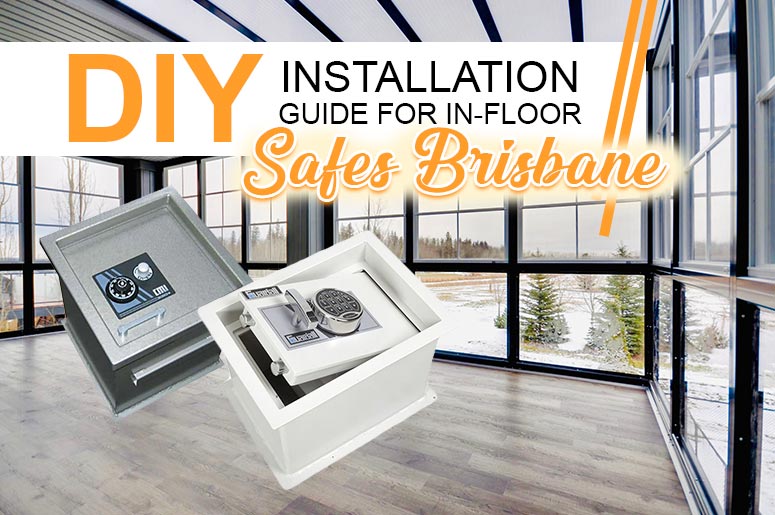DIY Installation Guide for In-Floor Safes Brisbane
Investing in in-floor safes in Sydney can be one of the smartest decisions you can make. Your valuables are less likely to be targeted by burglars and won't attract unwanted attention whenever you have guests at home. But installing floor safes in Brisbane can be tricky, especially if you're opting for a DIY safe installation.
Below is a quick guide on how to properly fit your safe in your floors to create an even more secure location for your precious belongings, firearms, and more.
Existing concrete floor installation for safes
Installing on Existing concrete isn’t as difficult as some people make it out to be. To do this yourself, you first need to make sure there’s enough room for your safe to fit into.
Measure the outside dimension of your in-floor safe’s body, add four inches, and layout the area for installation. An electric jackhammer usually works well for breaking through the flooring.
After you remove the concrete, you can start making a hole for the safe while adding an additional three inches deeper than the safe’s size. This additional space is for the layer of new concrete you pour into the hole that will serve as your safe’s base.
As you’re filling the hole with cement, you may want to add reinforcement to secure the safe’s position inside the floor. Keep the base as level as possible to the floor so your safe doesn’t stick out.
New concrete floor installation for your safe
Since you’re starting from scratch, you can start by digging a hole that follows the same dimensions plus additional space mentioned above for installing in existing concrete floors.
Position the safe properly in the live concrete ensuring it’s at the proper level before finishing off the floor. You may want to block out a hole for your safe by maintaining four inches of room on each side of the safe’s body. Afterwards, you can install the safe after the walls and roof are in place to prevent damage related to climate changes.
Wooden floor installation for in-floor safe
Create a retaining form made of wood with roofing paper, then attach this to the joists between the ground and floor. You will need to cut a hole in the floor following the same measurements indicated for installing on a concrete floor.
In-floor home safes Brisbane tend to be heavy, so reinforce the joists as necessary to support the weight. If you’d like to use a wood form, take out the wood after the cement sets to prevent insects from entering the structure.
Reminders before installing in-floor safes Brisbane:
- Is your safe new? If it is, it’s best to familiarise yourself with how to open the safe before placing valuables and inserting it on your floor. Try opening the safe at least six times so you know how to operate it.
- Consider using “dust covers” or other protective material to prevent cement or water from entering the safe during the installation.
- Invest in fireproof safes for home so your valuables can be protected from bushfires.
- Give the cement at least 48 hours to dry before using the safe.
When in doubt, ask the safe experts
Performing your own in-floor safe installation requires time and effort. You need to get everything right. If you’re still not sure where to begin, we highly suggest consulting a contractor or a safe technician to help you get started. If you live in areas that are prone to bushfires, they can also suggest fireproof safes for home.
Safes that are concealed such as in-floor safes Brisbane and hidden wall safes Sydney are known to offer the best protection against burglars. Choose inconspicuous locations such as under the kitchen sink or in your garage for your floor safe. Lastly, items that are prone to moisture damage should be kept in sealed bags to preserve their condition.

